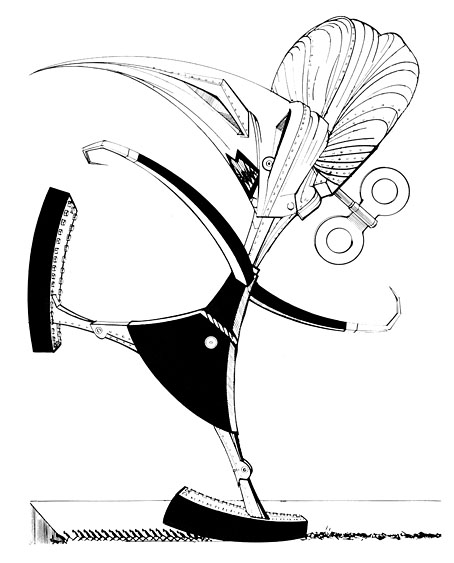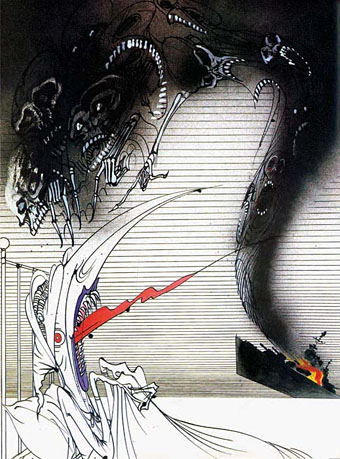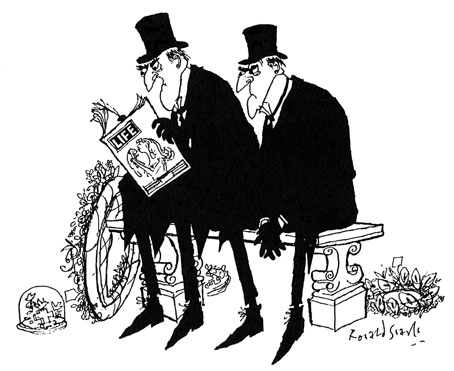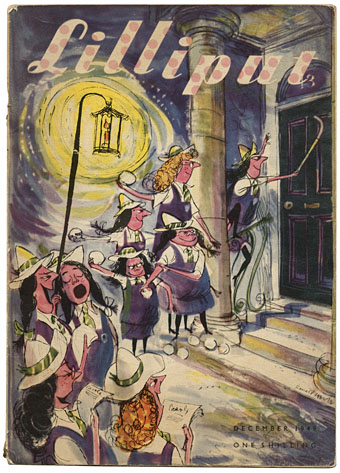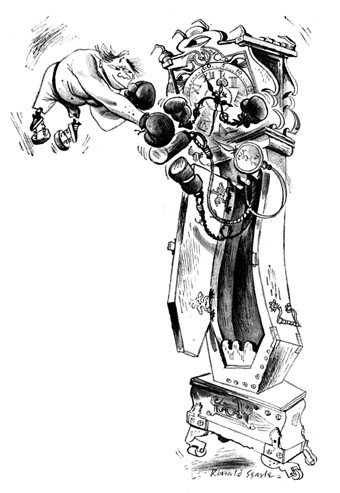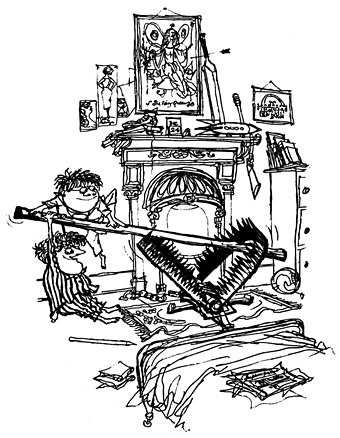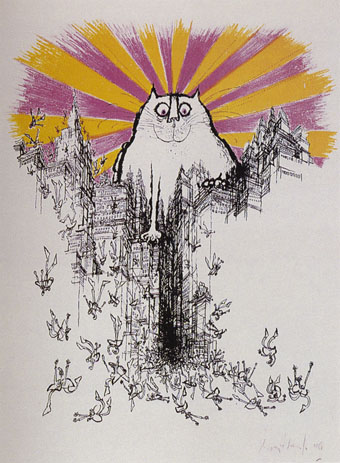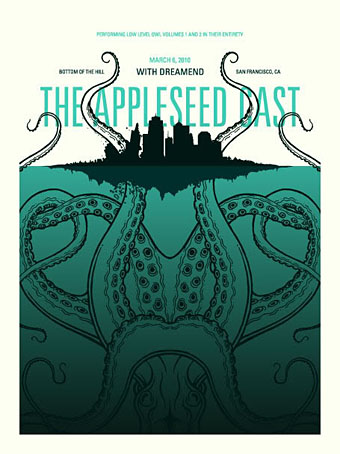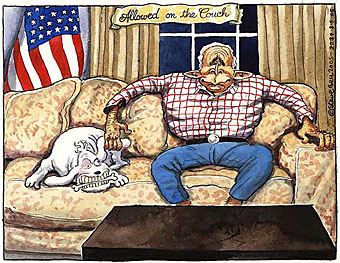
Cartoon by the wonderful Steve Bell.
I keep resolving to stop posting so much political stuff, there’s enough of that elsewhere and generally I’d prefer not to have the names, faces and actions of these miserable wretches polluting my web space. This was too good to miss, however. And this piece of polemic makes a good companion piece.
Jonathan Chait: Is Bush Still Too Dumb to Be President?
You can’t run a country on horse sense.
The Los Angeles Times
July 16, 2006
WAY BACK when he first appeared on the national scene, the rap against George W. Bush was that he might be too dumb to be president. As time passed, questions about Bush’s mental capabilities faded away.
After 9/11, his instinctive rather than analytical view of the world seemed to be just what we needed, and Americans of all stripes were desperate to see heroic qualities in him. (As Dan Rather announced at the time: “George Bush is the president; he makes the decisions; and, you know, as just one American, wherever he wants me to line up, just tell me where.”)
On top of that, Democrats decided it was politically counterproductive to attack Bush’s intelligence. Bruce Reed of the Democratic Leadership Council said in 2002, for instance, that calling Bush dumb “plays directly into Bush’s strength, which is that he comes across as a regular guy.” And so, for most of the last six years, the question of Bush’s intelligence has remained off the table.
Oh, sure, a few of us have brought it up from time to time, but we have generally been dismissed out of hand as wacky Bush-haters. By 2004, the question had been turned around completely. Democrats had almost nothing to say about Bush’s lack of intellect, while Republicans joyfully and repeatedly attacked John Kerry as an egghead. Anti-intellectualism was triumphant.
Yet it is now increasingly clear that Bush’s status as non-rocket scientist is a serious problem. The problem is not his habit – savored by late-night comedians – of stumbling over multisyllabic words. It is his shocking lack of intellectual curiosity.
Ron Suskind’s new book, “The One Percent Doctrine,” paints a harrowing picture of Bush’s intellectual limits. Bush, writes Suskind, “is not much of a reader.” He prefers verbal briefings and often makes a horse-sense judgment based on how confident his briefer seems in what he’s saying. In August 2001, the CIA was in a panic about an upcoming terrorist attack and drafted a report with the title, “Bin Laden Determined to Strike in U.S.” When a CIA staffer summed up the memo’s contents in a face-to-face meeting with Bush, the president found the briefer insufficiently confident and dismissed him by saying, “All right, you’ve covered your ass, now,” according to Suskind. That turned out to be a fairly disastrous judgment.
Bush loyalists like to dismiss Suskind’s reporting, but it jibes with the picture that has emerged from other sources. L. Paul Bremer III’s account of his tenure as head of Iraq’s Coalition Provisional Authority depicts Bush as uninterested in the central questions of rebuilding and occupying the country.
Video of a presidential meeting that came to light this year showed Bush being briefed on the incipient Hurricane Katrina. His subordinates come off as deeply concerned about a potential catastrophe, but Bush appears blase, declining to ask a single question. And of course there was the famous 2001 incident in which Russian President Vladimir Putin conveyed to Bush a story of being given a cross by his mother. Bush invested deep significance in the story. “I found him to be very straightforward and trustworthy,” he told reporters. “I was able to get a sense of his soul.”
Bush’s supporters have insisted for the last six years that liberal derision of the president’s intelligence amounts to nothing more than cultural snobbery. We don’t like his pickup truck and his accent, the accusation goes, so we hide our blue-state prejudices behind a mask of intellectual condescension.
But the more we learn about how Bush operates, the more we can see we were right from the beginning. It matters that the president values his gut reaction and disdains book learnin’. It’s not just a question of cultural style. The president’s narrow intellectual horizons have real consequences, sometimes cataclysmic ones.
It’s true that presidents can succeed without being intellectuals themselves. The trouble is that Bush isn’t just a nonintellectual, he viscerally disdains intellectuals. “What angered me was the way such people at Yale felt so intellectually superior and so righteous,” he told a Texas Monthly reporter in 1994.
When I went to college at Michigan, I occasionally played pickup basketball with varsity football players. They obviously felt athletically superior to me. I didn’t resent them for it – because they were.
